 Open Access
Open Access
ARTICLE
Influence of Vertical Irregularity on the Seismic Behavior of Base Isolated RC Structures with Lead Rubber Bearings under Pulse-Like Earthquakes
1 Civil Engineering Department, Faculty of Engineering Technology, Al-Balqa Applied University, Amman, 11134, Jordan
2 Civil Engineering Department, Faculty of Engineering, The University of Jordan, Amman, 11134, Jordan
* Corresponding Author: Yazan Alzubi. Email:
Structural Durability & Health Monitoring 2023, 17(6), 501-519. https://doi.org/10.32604/sdhm.2023.028686
Received 02 January 2023; Accepted 24 May 2023; Issue published 17 November 2023
Abstract
Nowadays, an extensive number of studies related to the performance of base isolation systems implemented in regular reinforced concrete structures subjected to various types of earthquakes can be found in the literature. On the other hand, investigations regarding the irregular base-isolated reinforced concrete structures’ performance when subjected to pulse-like earthquakes are very scarce. The severity of pulse-like earthquakes emerges from their ability to destabilize the base-isolated structure by remarkably increasing the displacement demands. Thus, this study is intended to investigate the effects of pulse-like earthquake characteristics on the behavior of low-rise irregular base-isolated reinforced concrete structures. Within the study scope, investigations related to the impact of the pulse-like earthquake characteristics, irregularity type, and isolator properties will be conducted. To do so, different values of damping ratios of the base isolation system were selected to investigate the efficiency of the lead rubber-bearing isolator. In general, the outcomes of the study have shown the significance of vertical irregularity on the performance of base-isolated structures and the considerable effect of pulse-like ground motions on the buildings’ behavior.Keywords
Reinforced concrete (RC) structures are vulnerable to both structural and non-structural components during severe earthquakes, whereas the case of irregular RC structures exhibits the greatest damage [1–3]. The irregularity can be the result of exceeding the margins indicated in seismic design codes due to practicality and design conditions [4]. Hence, the utilization of seismic control systems in RC structures is a priority to protect the structure under intense earthquakes [5]. Indeed, implementing a base isolation system in the structure is considered one of the approaches to decreasing structures’ responses, including displacement and acceleration [6]. Using such a system, structure protection under earthquakes is performed by decoupling the building from the earthquake motion and thus limiting the seismic responses [7]. However, there are different optimization techniques and approaches such as the utilization of an adaptive harmony search algorithm which can be implemented to optimize the design of seismic base isolation systems [8]. The algorithm iteratively generates new candidate solutions by combining the best solutions from the current population with new solutions generated by random perturbations. Another novel structural engineering method used for enhancing the resistance of structures against seismic forces is the incorporation of seismic performance upgrading of containment structures using a negative-stiffness amplification system which works by introducing a flexible, nonlinear component in the structural system to absorb and dissipate energy during the seismic event [9]. A different approach to improving the seismic mitigation of structures is the usage of inerter system which is a device that is used to reduce the dynamic response of structures by adding an additional mass-spring-damper system [10]. The long-period pulse of near-fault earthquakes can decrease the efficiency of the base isolation system, leading to instability in the structure [11]. Moreover, the development of overturning moments in the isolated structures causes possible tension in the rubber isolation bearings [10]. Based on that, the number of studies concerning the efficiency of the base-isolated structure subjected to near-fault pulse-like ground motions has improved considerably [12–15]. Mazza et al. [14] examined the effect of near-fault earthquakes on the behavior of RC structures with horizontal and vertical irregularity implemented with friction pendulum isolator. Additionally, Mazza [16] studied the influence of pulse-like earthquakes on the seismic behavior of L-shaped RC structures incorporated with sliding bearings elastomeric. Mazza et al. [17] investigated the extreme soft story case for structures utilized with a wide range of base isolation systems during near-fault pulse-like earthquakes. Nonetheless, the current state of the art is missing a study focusing on the efficiency of the base-isolations systems under pulse-like ground motions in relation to the effect of vertical irregular RC structures such as extremely soft-, heavy-, and stepped-story buildings. Thus, the influence of irregularity type and pulse-like earthquake characteristics on the efficiency and behavior of lead rubber-bearing isolators equipped with RC structures will be studied in this paper. To do so, an investigation of the effect of each irregularity type which are extremely soft-, heavy-, and stepped-story buildings, as well as an examination of the pulse-like records’ impact on the behavior and capability of lead rubber bearing isolator, will be conducted. Therefore, this paper aims to investigate the impact of short irregular RC structures and the characteristics of pulse-like earthquakes on the behavior of lead rubber-based isolators. Accordingly, the investigation of the irregularity case effect on the behavior of lead rubber bearings will be performed using finite element analysis, while the examination of the influence of pulse-like earthquake characteristics on the performance of lead rubber bearing will be conducted using statistical analysis software. In addition to that, the capability of lead rubber isolators as a seismic control system will be assessed. Based on that, the focus of attention of this study is to fill the gap in the current state of the art by evaluating the efficiency of isolated buildings implemented with lead rubber bearing under pulse-like ground motions.
2 Research Motivation and Significance
In recent years, the use of base isolation systems has become a common approach for reducing seismic responses of structures, including displacement and acceleration, during intense earthquakes. While numerous studies have investigated the performance of base isolation systems in regular RC structures under various types of earthquakes, investigations related to the performance of isolated RC buildings with irregularities when subjected to pulse-like records are scarce. The severity of pulse-like earthquakes is due to their ability to destabilize the base-isolated structure by significantly increasing the displacement demands. This research aims to investigate the effects of pulse-like earthquake characteristics on the behavior of low-rise irregular lead rubber isolated RC structures. The study will focus on the impact of pulse-like earthquake characteristics, irregularity type, and isolator properties on the seismic behavior of base-isolated structures. The outcomes of this study are expected to contribute significantly to the current knowledge of the performance of isolated buildings subjected to pulse-like ground motions, particularly in irregular RC structures. The findings will provide valuable insights into the significance of vertical irregularity on the performance of base-isolated structures and the considerable effect of pulse-like records on the behavior of the buildings.
The general research methodology that is utilized in this article is given in Fig. 1. In general, three different vertical irregularities and one regular building were taken as the research objects in this study as shown in Fig. 2. In general, the innovation of the selected methodology is represented by the second and third steps which requires designing the vertically irregular structures and selecting the pulse-like ground motions. Other important steps include the nonlinear analysis in which the ground motion records were induced in the structures and the responses were obtained and compared.
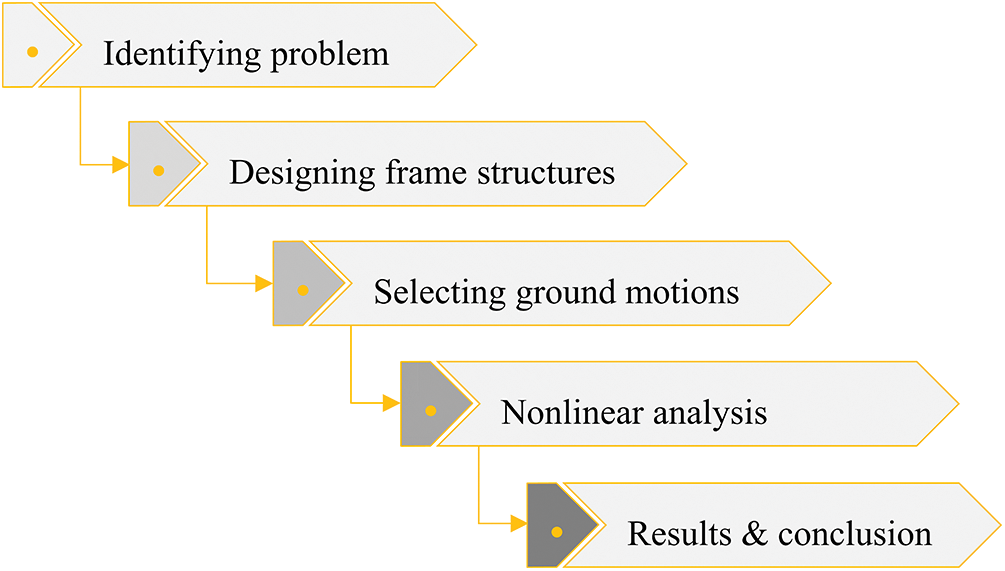
Figure 1: The research methodology used in this study
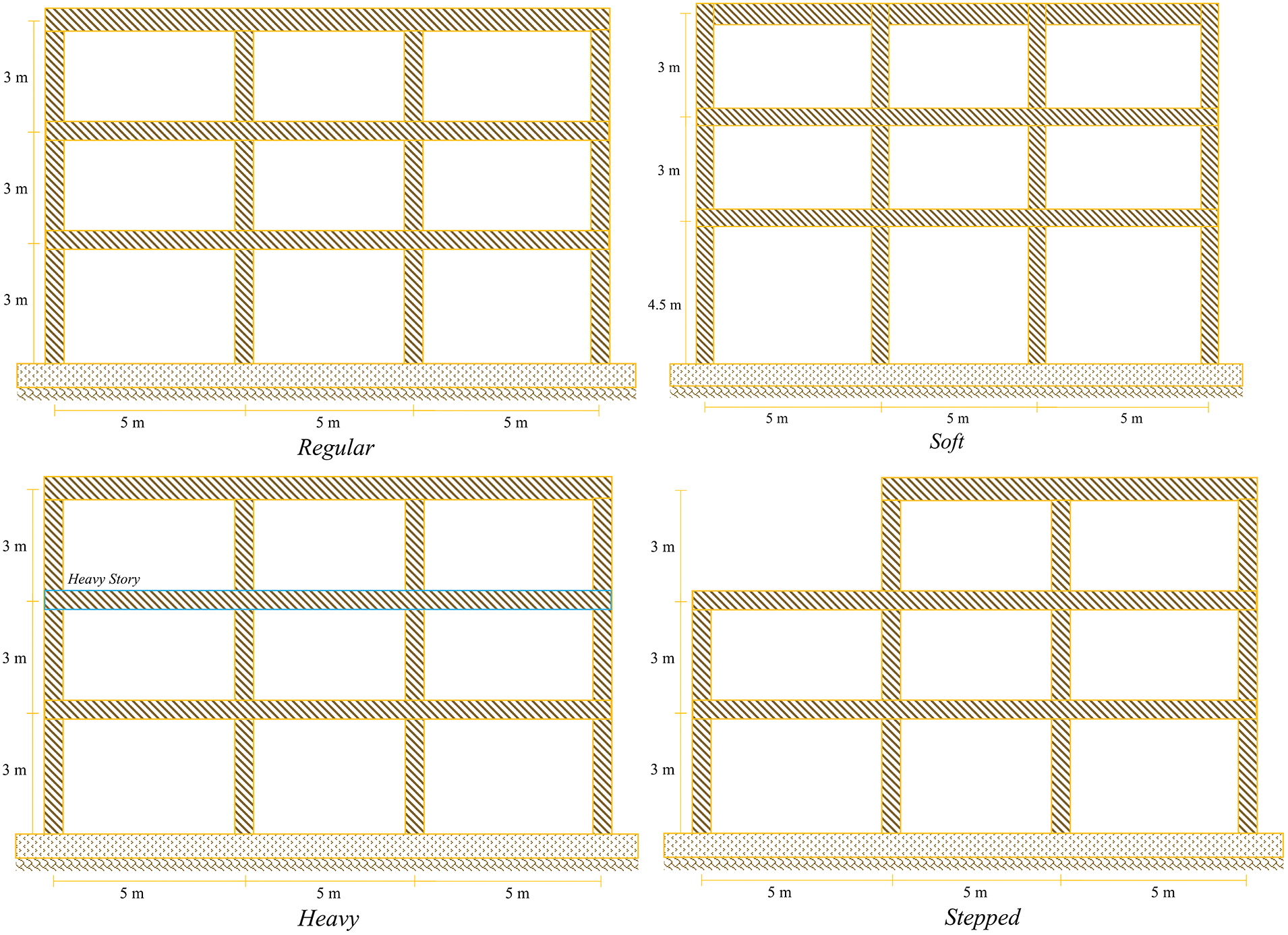
Figure 2: Selected frame structures used in this study
The irregularities are irregularity in stiffness (extreme soft story), irregularity in geometry (stepped structure), and irregularity in mass (heavy story), will be thoroughly studied in this paper. The most prevalent vertical irregularity by far is the irregularity in stiffness (extreme soft story) which is frequently presented in the first story in cases such as double height first soft story and open floor. In general, extreme soft story irregularity results from low stiffness in one story compared to the other stories. Double height first soft story occurs when the columns of the first story possess lower stiffness in contrast to the other columns in the structure, which is attributed to the higher height of the first story or to the voidness of walls in the first story with respect to the other stories. The development of this irregularity arises from the ability of the flexible floor to absorb most of the energy in the structure, causing higher inter-story drift values in comparison to the rest of the rigid upper stories, which absorb the rest of the energy resulting in a discontinuity in stiffness between the flexible and rigid stories and hence potentially partial or total damage in the structure. Irregularity in geometry (stepped structure) is the result of the minimization of the lateral dimension of the structure compared to the height [1]. Stepped structure irregularity results from a reduction in the adjacent story of roughly 130% in comparison to the horizontal dimensions of the structure [18]. This irregularity is observed in the minimization of stiffness, mass, and strength, which is the effect of the sudden minimization of the story area in regard to the structure’s height [1]. Stepped structures subjected to pulse-like earthquakes tend to display vulnerability due to an increase in displacement and story drift causing instability in the structure [19]. The last irregularity is the irregularity in mass (heavy story) is the result of a reduction in the mass of the adjacent story of roughly 150% with respect to the mass of one story [20]. Heavy story irregularity is similar to the soft story in terms of displacement and story drift in the structure [21]. The development of this irregularity can be observed in any story in the structure, whether it is low, middle, or upper. The second story was selected to weigh 1.66 times more than the rest to generate mass irregularity for this study.
In this study, four different low-rise (three stories with three bays) RC 2D frames were selected, representing typical moment-resisting frames. Each structure was utilized with a lead rubber bearing isolator to evaluate the seismic performance and efficiency under pulse-like earthquakes by comparing each irregularity’s effect with the regular control model. The components of a lead rubber bearing isolator are laminated rubber layers, lead core, attachment, and stiffening steel plates; where attachment plates were inserted at the upper and lower sides of the isolator, while stiffening plates and rubber layers were used in an alternate way using vulcanization bonding. A highly flexible horizontal layer was implemented between the foundation and the base-isolated structure to neutralize the effect of the horizontal component of earthquakes from the structure since the stiffness of lead rubber bearing is determined by the direction of the bearings, where the vertical direction represents highly stiff bearing. In contrast, the horizontal direction represents a highly flexible one. The isolator was modeled using the bilinear hysteretic approach to include the behavior in nonlinearity determined by characteristic strength, post-elastic stiffness, and yield displacement. The basic equation of motion for a two degree of freedom base-isolated model can be expressed as defined in Eqs. (1) and (2).
The inelastic seismic response of the structure equipped with a base isolation system was studied by modeling two degrees of freedom systems using finite element software (SAP2000). As a part, effective stiffness properties in accordance with ACI 318-19 were followed to conduct the linear elastic method via modeling the stiffness properties of the column and beam sections. In addition, an equivalent lateral force approach was performed to investigate whether the retrofitting is adequate according to the ASCE/SEI 7-16 code. To simplify the study, the same section size and reinforcements were utilized for all models to neutralize the effect of the structure’s period. On the other hand, the NIST GCR 17-917-46v3 guideline was followed for the nonlinear modeling of all models where the concrete model’s unconfined and confined compressive stress-strain behavior performed to represent the fiber section through Mander [22] approach. Furthermore, the tensile and compressive sections are defined using Park et al. [23] model to account for the reinforcement’s behavior. Simulation of the nonlinear behavior of the structural elements was performed using a concentrated hinge model to represent the column and beam sections as three fiber portions according to Kalantari et al. [24], which are the unconfined concrete cover, the confined concrete core, and the reinforcements. Nonlinear time history analysis was followed using SAP2000 [25], where the damping ratio at 1.5 and 0.25 multiplied by the first fundamental mode period was 2.5% calculated to investigate the efficiency of lead rubber bearing isolator at the damping ratios of 15%, 20%, and 25%. Simulation of the beam to column joint and the P-delta effects were considered in the analysis. PEER was used to select a suit of 16 actual pulse-like earthquake records where different scaling methods, such as ACT [26] and ASCE [27], and the MSE method were investigated as done by Michaud et al. [28]. It was found that the MSE method reflected the best performance in regard to the rest of the scaling approaches and hence was selected in this study to scale the earthquake signals between 0 and 5 s, as depicted in Fig. 3. A single scale factor for each earthquake record was calculated then a modification factor of the scale factors was computed to minimize the MSE between the average and reference spectrums of the earthquake records to produce a matching results between both spectrums for the range of periods selected. It can be seen from Fig. 3 that the target spectrum and the mean one match each other over the periods between 0.01 and 5 s which means that the scale factors computed are suitable for the analysis of the investigated structures. Finally, to consider the free vibration influence, 15 s of zeroes were added at the end of each earthquake record [29].
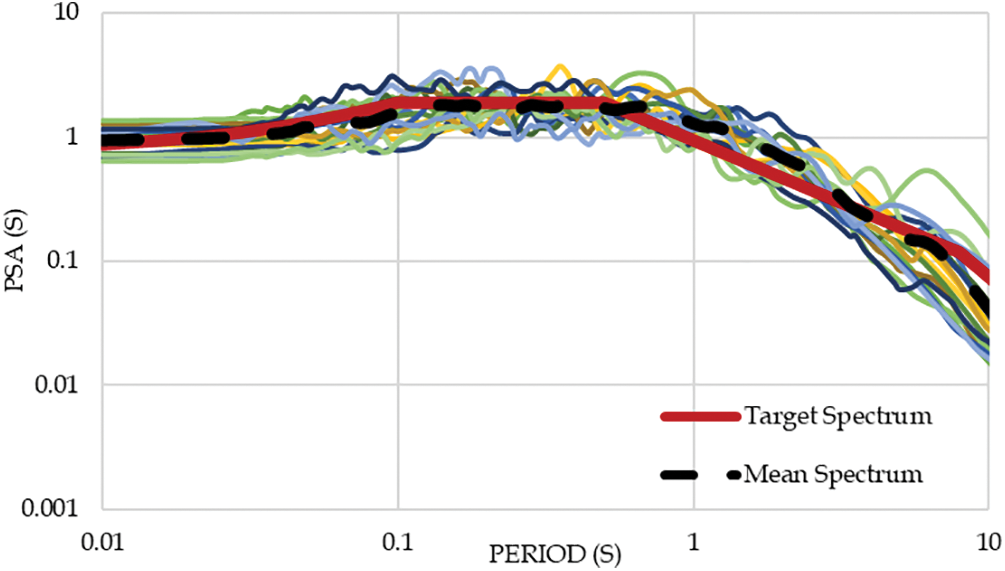
Figure 3: Targeted spectrum vs. the mean one for the selected ground motion records
The seismic demand of base-isolated RC structures experienced a decrease with all damping ratios for both positive and negative directions, as illustrated in Fig. 4. Regarding positive direction, the heavy story and regular structures showed the highest base shear results for the case of the bare structure, while the soft story case reflected the lowest values. The same results of base shear were observed in the negative direction, where heavy story irregularity demonstrated the highest results and soft story irregularity exhibited the least. In fact, the highest reduction in base shear for all damping ratios was the heavy story case, while the soft story showed the lowest reduction. Implementing a lead rubber bearing isolator proved its effectiveness and efficiency in decreasing the shear forces at the base for all cases, where the values at 15%, 20%, and 25% damping ratios were observed to be similar. However, the 25% damping ratio showed the highest minimization of base shear for all models in both directions.
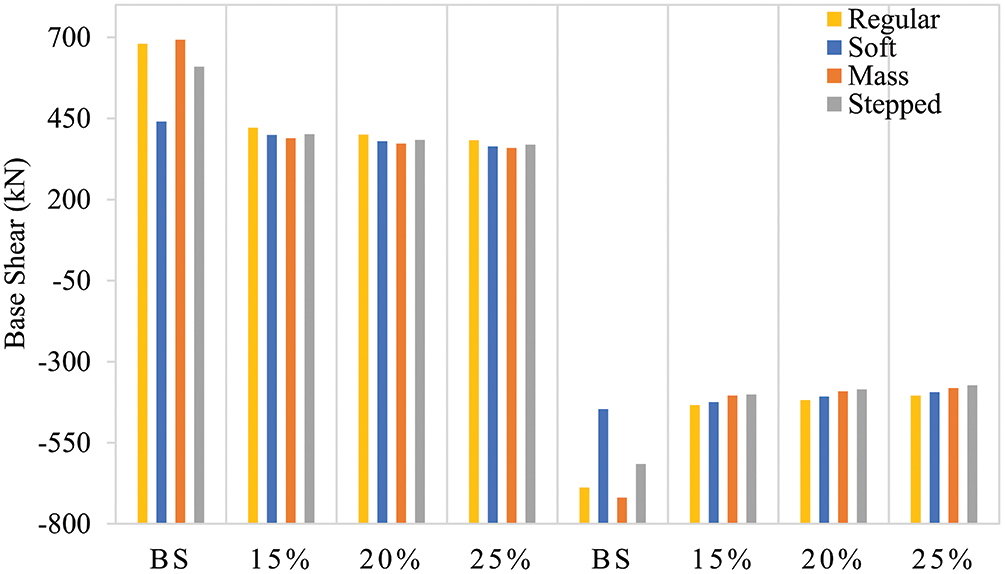
Figure 4: Mean base shear of the investigated structures
Regarding the base isolation system, Table 1 shows that the increase in damping ratio was accompanied by a decrease in the base shear results where the damping ratio of 15% exhibited the peak succeeded by 20% and 25%, respectively. In general, the performance and efficiency of the base isolator were determined depending on the difference between the values of base shear in the case of a bare structure in regard to the base-isolated case, where the smaller the difference, the lower efficiency and performance of the isolator. Based on that, the isolator reflected the best efficiency in the case of heavy story case compared to the soft story one, which represented the lowest efficiency in base shear. The severity of soft story on the lead rubber performance arises from the decrease in stiffness resulting in an increase in the structure’s period. Hence, a diminishment in the isolator’s efficiency was recorded compared to other irregular models [30,31].

Soft story structure displayed the highest roof displacement values in both bare structure and base-isolated cases, where the highest value was recorded at 0.2 in the positive direction and −0.2 in the negative direction, as illustrated in Fig. 5. On the other hand, the lowest roof displacement results were observed in the case of stepped structure for both bare and base-isolated cases. Accordingly, the soft story experienced the highest decrease in roof displacement, while the stepped structure experienced the lowest. Generally, lead rubber bearings showed considerable efficiency in minimizing roof displacement response for all base-isolated cases at all damping ratios. On the other hand, the highest drop in roof displacement was observed at a 25% damping ratio for all structures in both directions.
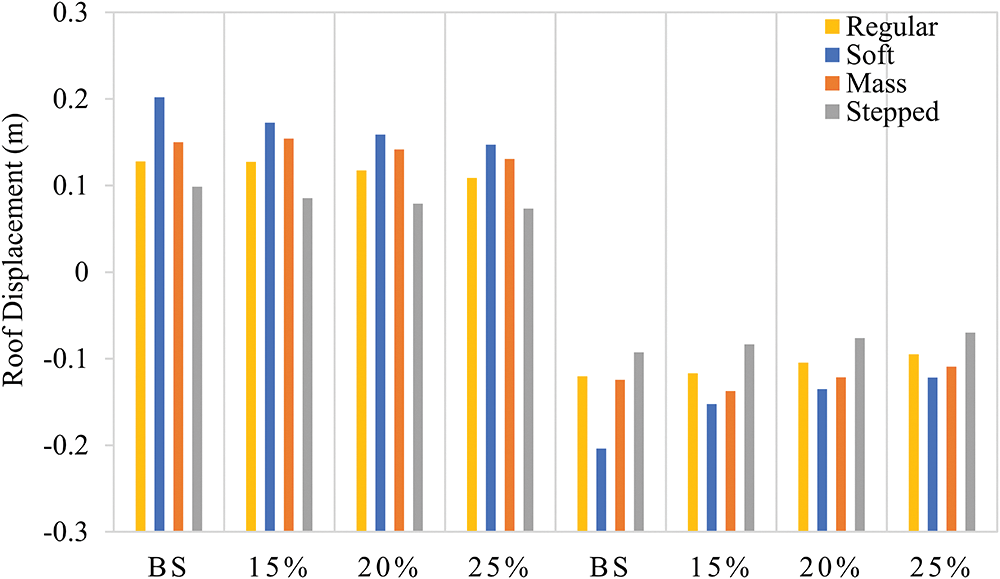
Figure 5: Mean roof displacement of the investigated structures
In the case of base isolation, an inversely proportional relationship between the roof displacement response of base-isolated structures and the damping ratio was observed, where the damping ratio of 15% reflected the highest roof displacement values, followed by 20% and lastly 25% for all base isolated models as given in Table 2. The Soft story case is the most severe and drastic vertical irregularity for RC structures subjected to all types of earthquakes since it exhibited the highest roof displacement values, which follows the findings of other results, including reference [19] due to the fact that soft story case emerges from the drop in stiffness and thus in an increase in the period which compromises the performance of the bearing [30,31]. Despite that, the use of a lead rubber bearing isolator reflected the best performance for all cases at all damping ratios in the case of soft story irregularity, which showed the highest minimization of roof displacement results compared to the stepped structure, which experienced the lowest results where lead rubber was not effective. This is attributed to the impact of seismic intensity (PGA/PGV), where higher displacement is developed for base isolated structures compared to bare structures because of the low (PGA/PGV) ratios that significantly affect high-period flexible models in contrast with stiff ones. As a result, the effect of (PGA/PGV) ratios in the case of regular, heavy, and stepped cases was considerably noticed compared to the extremely soft story, where the effect of (PGA/PGV) ratios was low because of the reduced stiffness in soft story yielding stiffer structure.

Stepped structure case exhibited the highest roof acceleration results in both bare and base-isolated structures, while soft story irregularity experienced the lowest roof acceleration results, as represented in Fig. 6. Based on that, the highest roof acceleration reduction was seen in the stepped structure, whereas the soft story structure showed the lowest reduction. Using a lead rubber bearing isolator demonstrated efficiency and effectiveness in dropping the roof acceleration for all cases in all damping ratios. Regardless of that, the 25% damping ratio displayed the peak reduction in this response for all models in positive and negative directions.
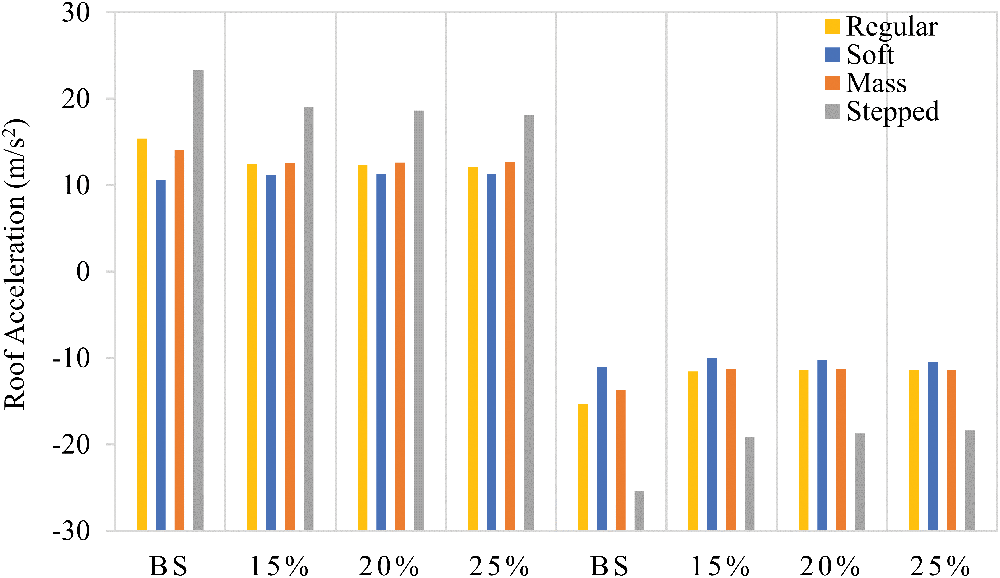
Figure 6: Mean absolute roof accelerations of the investigated structures
On the contrary, the values of roof acceleration of base-isolated models (Table 3) were inversely proportional to the damping ratios, where an increase in the damping ratio accompanies any reduction in the roof acceleration. Lead rubber bearing isolator proved to be highly efficient at all damping ratios in the case of stepped structure, while soft story irregularity showed the least efficiency among all models. This is because the soft story case experiences a decrease in stiffness and an increase in the structure’s period compared to other vertical irregularities. Lastly, the roof acceleration response of the base-isolated irregular RC structures was not influenced by the PGA/PGV ratio. Table 4 shows the input energy of the investigated buildings.


Lead rubber bearing isolator showed efficiency and effectiveness in decreasing the hysteretic energy and increasing the damping energy for all base-isolated structures at all damping ratios, as illustrated in Fig. 7. The damping energy, Table 5, of all base isolated models was directly proportional to the damping ratios, where any increase in the damping ratio increased the damping energy. Accordingly, a soft story structure incorporated with a lead rubber isolator exhibited the highest efficiency at all damping ratios, while heavy story irregularity reflected the lowest efficiency. However, the stepped structure with only a 25% damping ratio displayed comparable performance to the soft story, while other damping ratios of the stepped structure showed lower performance.
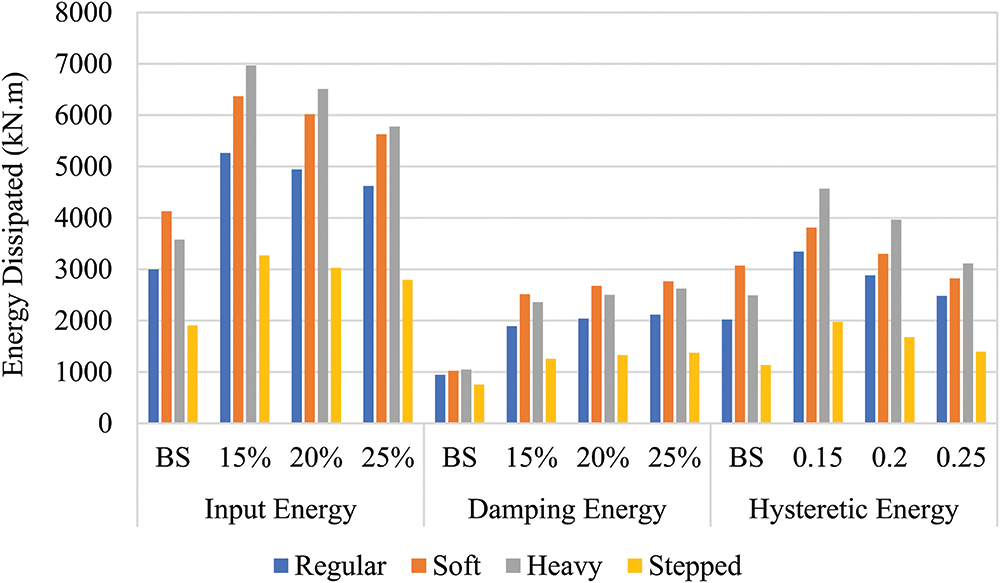
Figure 7: Mean energy component of the selected structures

The deployment of lead rubber bearing isolator in all RC structures demonstrated extraordinary efficiency and effectiveness in enhancing the damping energy and improving the dissipation capacity of base-isolated structures at all damping ratios, leading to safer structures subjected to catastrophic earthquakes, including pulse-like ones. As shown in Fig. 7, the damping ratio of 25% represented the highest damping energy values for all RC structures equipped with base isolators.
The hysteretic energy of all base isolated models was inversely proportional to the damping ratios, where the increase in the damping ratio is accompanied by a reduction in the hysteretic energy, as shown in Table 6 in good agreement with the results of other studies such as [9]. Furthermore, the damping ratio of 15% exhibited the highest hysteretic energy for all base-isolated structures, followed by 20% and 25%.

The roof displacement response in the time domain for one earthquake record of the investigated buildings is depicted in Fig. 8. The response was compared for regular, soft-, heavy-, and stepped-story cases in the case of fixed and isolated bases. Additionally, the response was drawn for three cases of base isolated models which are 15%, 20%, and 25%. As can be seen, the highest roof displacement result was recorded in the case of the soft model followed by heavy and regular whereas the lowest roof displacement value was observed in the case of the stepped structure.

Figure 8: Roof displacement in time domain for investigated structures
The present research seeks to address the knowledge gap regarding the performance of irregular RC buildings with base isolations subjected to pulse-like ground motions. These types of earthquakes are particularly problematic due to their ability to dramatically increase displacement demands, thus destabilizing base-isolated structures. The study’s primary objective is to investigate the effects of pulse-like earthquake characteristics on the performance of low-rise isolated buildings. Additionally, the research examines the impact of pulse-like earthquake characteristics, irregularity type, and isolator properties. Several factors contribute to the complexity of this research topic. Firstly, irregular structures often exhibit unique behaviors when subjected to seismic events, making them more susceptible to damage. Secondly, pulse-like earthquakes are characterized by their intense ground motion, which can significantly affect the performance of base-isolated structures. To address these challenges, the study utilizes a combination of nonlinear response history analysis and a systematic exploration of various damping ratios of the base isolation system. This approach allows for an in-depth assessment of the behavior of the lead rubber-bearing isolator under different earthquake scenarios. In general, the effects of the irregularity case on structural responses was found to be contingent on the particular response under investigation. The regular model was observed to yield the highest base shear results, whereas the soft story irregularity produced the greatest values of roof displacement. On the other hand, the stepped structure experienced the most substantial roof acceleration outcomes. Overall, the structural responses of base-isolated models displayed an inverse proportionality to the damping ratio, with the exception of the damping energy response, which exhibited a direct proportionality to the damping ratio. Among all reinforced concrete (RC) structures subjected to various earthquake types, the soft story irregularity reflected the highest absolute peak base shear as compared to heavy story irregularity and stepped structure cases. This is attributed to the minimization of stiffness in the first story, accompanied by an increased period of the structure, which ultimately compromises the efficiency and performance of lead rubber bearing isolators. Furthermore, soft story irregularity demonstrated the highest residual results across all damping ratios in comparison to heavy and stepped structures. Interestingly, the isolator’s varying damping ratios proved to be ineffective in terms of base shear response. All base-isolated irregular models’ absolute peak roof displacement values were found to be relatively similar and closely aligned. Additionally, the change in damping ratio exerted no influence on the roof displacement residual. The roof acceleration results of soft-, heavy-, and stepped-story structure cases were found to be akin and comparable. Nonetheless, the highest roof acceleration residual value was observed to be approximately 0.6 for the stepped structure case. The roof acceleration residual experienced no significant changes with the varying damping ratios. As for the peak input energy results, the stepped structure case displayed the highest values when compared to soft and heavy story cases. The different damping ratios, however, had no noticeable impact on the input energy. The three base-isolated irregular models showcased a random distribution of damping energy values, with no discernible change in the damping energy response due to the different damping ratios. The stepped structure irregularity exhibited the highest hysteretic energy compared to the soft and heavy story cases, owing to the fact that stepped irregularity arises from an increase in story drift and displacement, leading to the instability of structures during earthquakes. The literature offers a plethora of earthquake intensity indicators, such as PGA, PGV, and the PGA/PGV ratio. Despite this, the PGA/PGV ratio has been recommended for evaluating earthquake properties. Based on this suggestion, the PGA/PGV ratio was classified into three distinct groups. As noted in previous observations, long-period flexible structures were significantly affected by low PGA/PGV ratio values, while short-period stiff structures were substantially influenced by high PGA/PGV ratios. This study aligns with these findings, as base-isolated structures were more impacted by low PGA/PGV ratios compared to their bare counterparts.
This study has focused on evaluating the performance of isolated RC buildings subjected to pulse-like ground motions. Moreover, extreme soft-, heavy-, and stepped-story buildings were studied to investigate the influence of these vertical irregularities on the structural response of RC buildings under to pulse-like earthquakes. Accordingly, the following conclusions can be stated:
• Lead rubber bearing isolator utilized with RC models showed high efficiency and effectiveness in minimizing the structural responses.
• The investigated structural response changes the impact of irregularity type.
• The damping ratio is inversely proportional to the hysteretic energy and directly proportional to the damping energy, where the increase in the damping ratio results in a decrease in the hysteretic energy and an increase in the damping energy.
• The residual of all structural responses was not affected by the change in the damping ratio.
• The severity of soft story irregularity was the highest regarding other vertical irregularities, which is attributed to the fact that soft story emerges from the decrease in stiffness accompanied by an increase in the structure’s period and hence diminishes the efficiency and behavior of lead rubber bearings.
• Stepped structure irregularity displayed the lowest structural responses except for the roof acceleration.
• The utilization of the PGA/PGV ratio as a parameter for evaluating the properties of earthquakes showed a remarkable impact on the performance of the base isolation system, where the base-isolated structures experienced higher displacement in comparison to bare structures due to the influence of the low values of PGA/PGV ratio.
In general, this study is limited to low-rise irregular base-isolated RC structures equipped using lead rubber isolators when subjected to pulse-like records. Further investigations can be conducted to explore the effect of other types of irregularities (e.g., plan irregularity) on the behavior of isolated buildings subjected to pulse-like earthquakes. The influence of other types of seismic control systems, such as friction pendulum systems, elastomeric bearings, on the inelastic performance of irregular isolated RC buildings can also be assessed in more detail. The present study focused on low-rise structures; hence, future research can explore the effect of vertical irregularity on the seismic behavior of tall structures.
Acknowledgement: Not applicable.
Funding Statement: The authors received no specific funding for this study.
Author Contributions: The authors confirm contribution to the paper as follows: study conception and design: A. M., A. Y.; data collection: A. Y., J. A.; analysis and interpretation of results: A. M., Y. A., I. M.; draft manuscript preparation: A. M., A. Y. All authors reviewed the results and approved the final version of the manuscript.
Availability of Data and Materials: The data that were used in this study are all available upon a reasonable request from the corresponding author.
Conflicts of Interest: The authors declare that they have no conflicts of interest to report regarding the present study.
References
1. Sarkar, P., Prasad, A. M., Menon, D. (2010). Vertical geometric irregularity in stepped building frames. Engineering Structures, 32(8), 2175–2182. [Google Scholar]
2. Inel, M., Ozmen, H. B., Bilgin, H. (2008). Re-evaluation of building damage during recent earthquakes in Turkey. Engineering Structures, 30(2), 412–427. [Google Scholar]
3. Kim, S. J., Elnashai, A. S. (2009). Characterization of shaking intensity distribution and seismic assessment of RC buildings for the Kashmir (Pakistan) earthquake of October 2005. Engineering Structures, 31(12), 2998–3015. [Google Scholar]
4. Varadharajan, S., Sehgal, V. K., Saini, B. (2012). Review of different structural irregularities in buildings. Journal of Structural Engineering, 39(5), 393–418. [Google Scholar]
5. Parulekar, Y. M., Reddy, G. R. (2009). Passive response control systems for seismic response reduction: A state-of-the-art review. International Journal of Structural Stability and Dynamics, 9(1), 151–177. [Google Scholar]
6. Kangda, M. Z., Bakre, S. (2018). The effect of LRB parameters on structural responses for blast and seismic loads. Arabian Journal for Science and Engineering, 43(4), 1761–1776. [Google Scholar]
7. Rong, Q. (2020). Optimum parameters of a five-story building supported by lead-rubber bearings under near-fault ground motions. Journal of Low Frequency Noise, Vibration and Active Control, 39(1), 98–113. [Google Scholar]
8. Ocak, A., Nigdeli, S. M., Bekdaş, G., Kim, S., Geem, Z. W. (2022). Optimization of seismic base isolation system using adaptive harmony search algorithm. Sustainability, 14(12), 7456. [Google Scholar]
9. Zhang, R., Zhao, Z., Pan, C. (2018). Influence of mechanical layout of inerter systems on seismic mitigation of storage tanks. Soil Dynamics and Earthquake Engineering, 114, 639–649. [Google Scholar]
10. Zhao, Z., Wang, Y., Hu, X., Weng, D. (2022). Seismic performance upgrading of containment structures using a negative-stiffness amplification system. Engineering Structures, 262, 114394. [Google Scholar]
11. Mazza, F., Labernarda, R. (2018). Effects of nonlinear modelling of the base-isolation system on the seismic analysis of r.c. buildings. Procedia Structural Integrity, 11, 226–233. [Google Scholar]
12. Hall, J. F., Heaton, T. H., Halling, M. W., Wald, D. J. (1995). Near-source ground motion and its effects on flexible buildings. Earthquake Spectra, 11(4), 569–605. [Google Scholar]
13. Mazza, F., Vulcano, A. (2012). Effects of near-fault ground motions on the nonlinear dynamic response of base-isolated r.c. framed buildings. Earthquake Engineering & Structural Dynamics, 41(2), 211–232. [Google Scholar]
14. Mazza, F., Mazza, M. (2016). Nonlinear seismic analysis of irregular rc framed buildings base-isolated with friction pendulum system under near-fault excitations. Soil Dynamics and Earthquake Engineering, 90, 299–312. [Google Scholar]
15. Jangid, R. S., Kelly, J. M. (2001). Base isolation for near-fault motions. Earthquake Engineering & Structural Dynamics, 30(5), 691–707. [Google Scholar]
16. Mazza, F. (2018). Seismic demand of base-isolated irregular structures subjected to pulse-type earthquakes. Soil Dynamics and Earthquake Engineering, 108, 111–129. [Google Scholar]
17. Mazza, F., Mazza, M., Vulcano, A. (2018). Base-isolation systems for the seismic retrofitting of r.c. framed buildings with soft-storey subjected to near-fault earthquakes. Soil Dynamics and Earthquake Engineering, 109, 209–221. [Google Scholar]
18. ASCE (2016). ASCE/SEI 7-16 minimum design loads for buildings and other structures. California, USA: American Society of Civil Engineering. [Google Scholar]
19. Ghosh, R., Debbarma, R. (2017). Performance evaluation of setback buildings with open ground storey on plain and sloping ground under earthquake loadings and mitigation of failure. International Journal of Advanced Structural Engineering, 9(2), 97–110. [Google Scholar]
20. Sadashiva, V. K., MacRae, G. A., Deam, B. L. (2009). Determination of structural irregularity limits. Bulletin of the New Zealand Society for Earthquake Engineering, 42(4), 288–301. [Google Scholar]
21. Michalis, F., Dimitrios, V., Manolis, P. (2006). Evaluation of the influence of vertical irregularities on the seismic performance of a nine-storey steel frame. Earthquake Engineering & Structural Dynamics, 35(12), 1489–1509. [Google Scholar]
22. Mander, J. B., Priestley, M. J., Park, R. (1988). Theoretical stress-strain model for confined concrete. Journal of Structural Engineering, 114(8), 1804–1826. [Google Scholar]
23. Park, R., Paulay, T. (1975). Reinforced concrete structures. New Jersey, USA: Wiley. [Google Scholar]
24. Kalantari, A., Roohbakhsh, H. (2020). Expected seismic fragility of code-conforming RC moment resisting frames under twin seismic events. Journal of Building Engineering, 28, 101098. [Google Scholar]
25. CSI (2022). SAP2000-structural software for analysis and design. California: Computers and Structures Inc. [Google Scholar]
26. ACT (2009). ATC-63: Quantification of building seismic performance factors. California: US Department of Homeland Security. [Google Scholar]
27. ASCE (2005). ASCE/SEI 7-05: Minimum design loads for buildings and other structures. Virginia: American Society of Civil Engineers. [Google Scholar]
28. Michaud, D., Léger, P. (2013). Ground motions selection and scaling for nonlinear dynamic analysis of structures located in Eastern North America. Canadian Journal of Civil Engineering, 41(3), 232–244. [Google Scholar]
29. Kitayama, S., Constantinou, M. C. (2018). Seismic performance of buildings with viscous damping systems designed by the procedures of ASCE/SEI 7-16. Journal of Structural Engineering, 144(6), 04018050. [Google Scholar]
30. FEMA (2007). NEHRP recommended provisions for new buildings and other structures: Training and instructional materials. California, USA: FEMA. [Google Scholar]
31. Barmo, A., Mualla, I. H., Hasan, H. T. (2014). The behavior of multi-story buildings seismically isolated system hybrid isolation (friction, rubber and with the addition of rotational friction dampers). Open Journal of Earthquake Research, 4(1), 52406. [Google Scholar]
Cite This Article
 Copyright © 2023 The Author(s). Published by Tech Science Press.
Copyright © 2023 The Author(s). Published by Tech Science Press.This work is licensed under a Creative Commons Attribution 4.0 International License , which permits unrestricted use, distribution, and reproduction in any medium, provided the original work is properly cited.


 Submit a Paper
Submit a Paper Propose a Special lssue
Propose a Special lssue View Full Text
View Full Text Download PDF
Download PDF Downloads
Downloads
 Citation Tools
Citation Tools